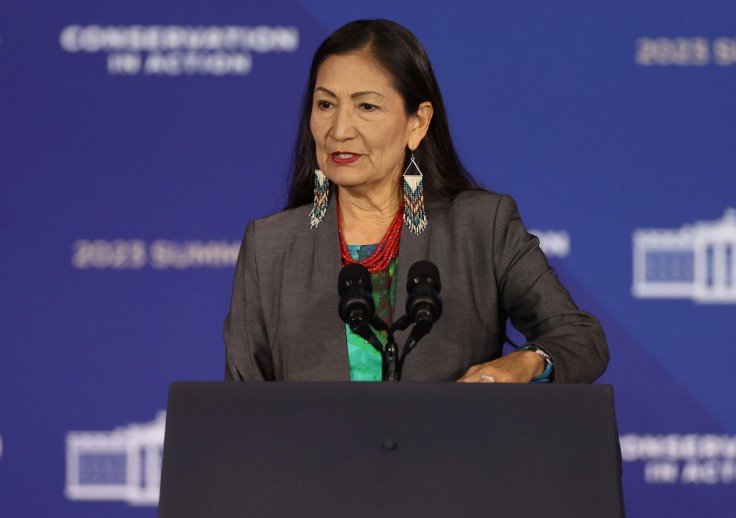
The U.S. government is taking action to preserve the history of the experiences of the surviving indigenous students who experienced boarding schools in the late 1880s.
The Interior Department has partnered with the National Endowment for the Humanities in a groundbreaking initiative aimed at documenting the harrowing experiences of Alaska Native, Native Hawaiian, and Native American students who attended federally funded schools.
The initiative will involve gathering oral histories from survivors and descendants of the boarding schools, which were notorious for their cruel and abusive practices in the name of civilizing Indigenous students.
The National Endowment for the Humanities has pledged $4 million to support the project, which will shed light on a dark chapter in American history.
US Government Documenting the Oral Histories of Native Americans
The U.S. government's initiative to document the experiences of Alaska Native, Native Hawaiian, and Native American students at federally funded schools across the country is a significant step towards acknowledging and addressing the traumatic legacy of boarding schools that sought to assimilate Indigenous children.
According to Fox, in a statement, Shelly Lowe, who chairs the NEH and is Navajo, stressed the importance of confronting this history and its intergenerational consequences.
The NEH has previously supported efforts to raise awareness about boarding schools, including funding a permanent exhibit at the Heard Museum in Phoenix and a project to digitize records at the Genoa Indian School in Nebraska.
Interior Secretary Deb Haaland, a member of Laguna Pueblo in New Mexico, has taken a leading role in addressing the trauma caused by boarding schools.
The department recently released a report identifying 408 schools that were supported by the federal government, many of which were run by religious and private institutions.
Victims and survivors of these schools have shared their stories during a department-led "Road to Healing" tour, which has revealed a range of abuses, including being locked in basements as punishment, having their hair cut as a means of erasing their identities, and experiencing physical and mental abuse.
To ensure that these stories are not lost, the department will collect oral histories from survivors and descendants of boarding schools, at the request of Indigenous communities.
Haaland emphasized the importance of this effort, stating that it is one step among many that the government will take to rebuild the bonds within Native communities that were severed by federal Indian boarding school policies.
This initiative marks a crucial step towards acknowledging the painful history of boarding schools and honoring the resilience of Indigenous peoples who have survived them.
Read Also: Pennsylvania Passes Bill Requiring Insurers To Cover Breast Cancer Screenings, Genetic Testing Costs
Indigenous Students Experiences in Boarding Schools
According to the National Native American Boarding School Healing Coalition, from the late 1800s to the 1960s, the U. S. government and various Christian denominations operated boarding schools for Native American children.
They remove them from their families and homes with the aim of assimilating them into mainstream American society.
The Indian Civilization Act Fund and the Peace Policy of 1869 were implemented to promote cultural genocide by removing and reprogramming Native American children in order to systematically destroy Native cultures and communities.
The policy's goal was to "Kill the Indian, Save the Man." While the total number of children taken is unknown, there were 20,000 children in Indian boarding schools by 1900 and over 60,000 by 1925.
As per the Native Partnership Organization, the curriculum taught in these schools emphasized material wealth, private property, Protestant ideology, and monogamous nuclear families.
The schools also required religious instruction that focused on the Psalms, the Beatitudes, and the Ten Commandments.
The schools' discipline was harsh, involving confinement, threats of corporal punishment, deprivation of privileges, and restricted diets.
Additionally, diseases such as tuberculosis and trachoma were rampant at these schools, resulting in epidemics and deaths among students.
In conclusion, the U.S. government's partnership with the NEH to document the experiences of Native Americans at federally funded schools is a critical step towards acknowledging the traumatic legacy of boarding schools.
This initiative will help shed light on a dark chapter in American history and honor the resilience of Indigenous peoples who have survived these institutions' abuses.
By collecting oral histories from survivors and descendants of boarding schools, the U.S. government aims to rebuild the bonds within Native communities served by federal Indian boarding school policies.
This initiative marks a crucial step towards confronting this history and its intergenerational consequences.